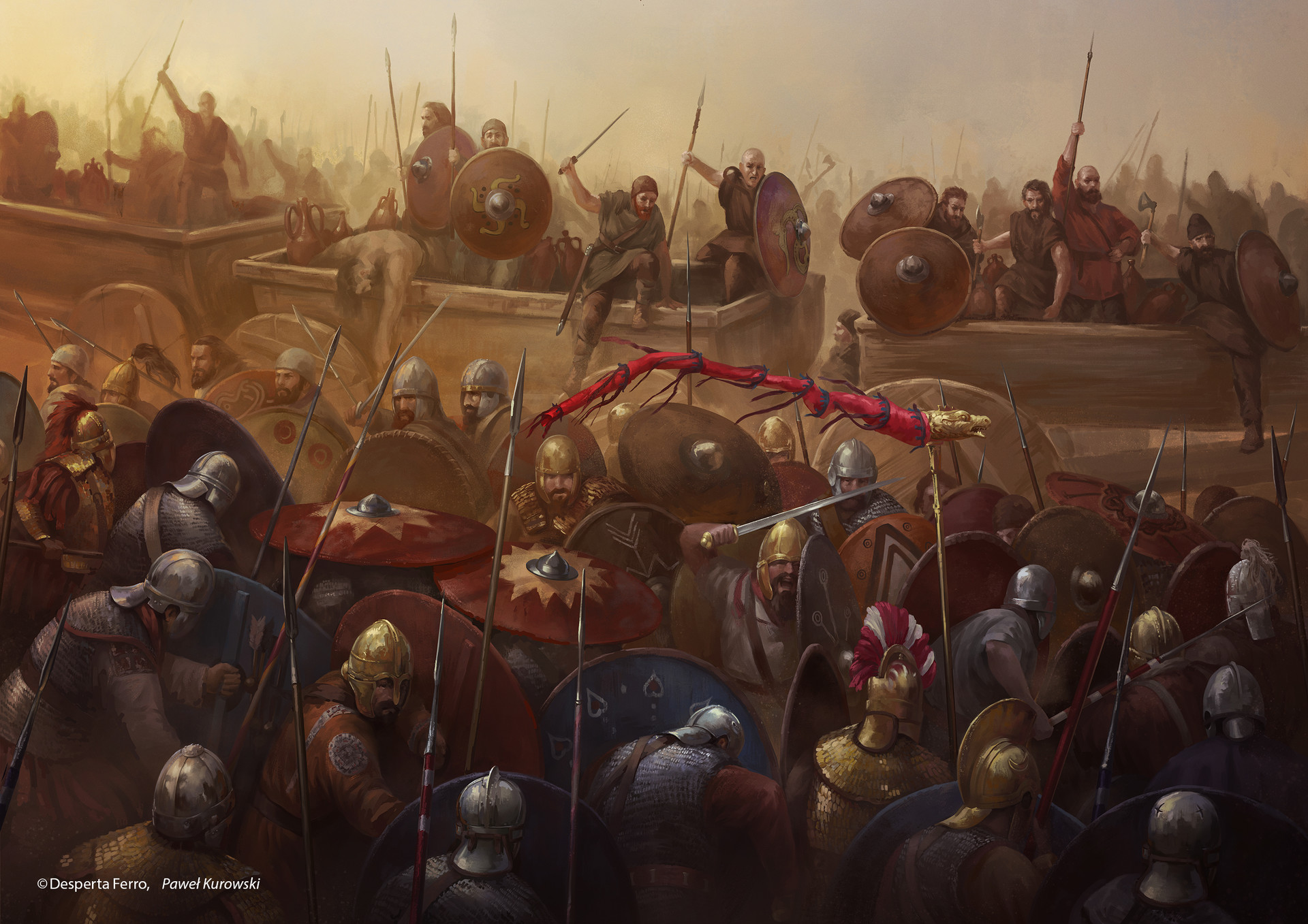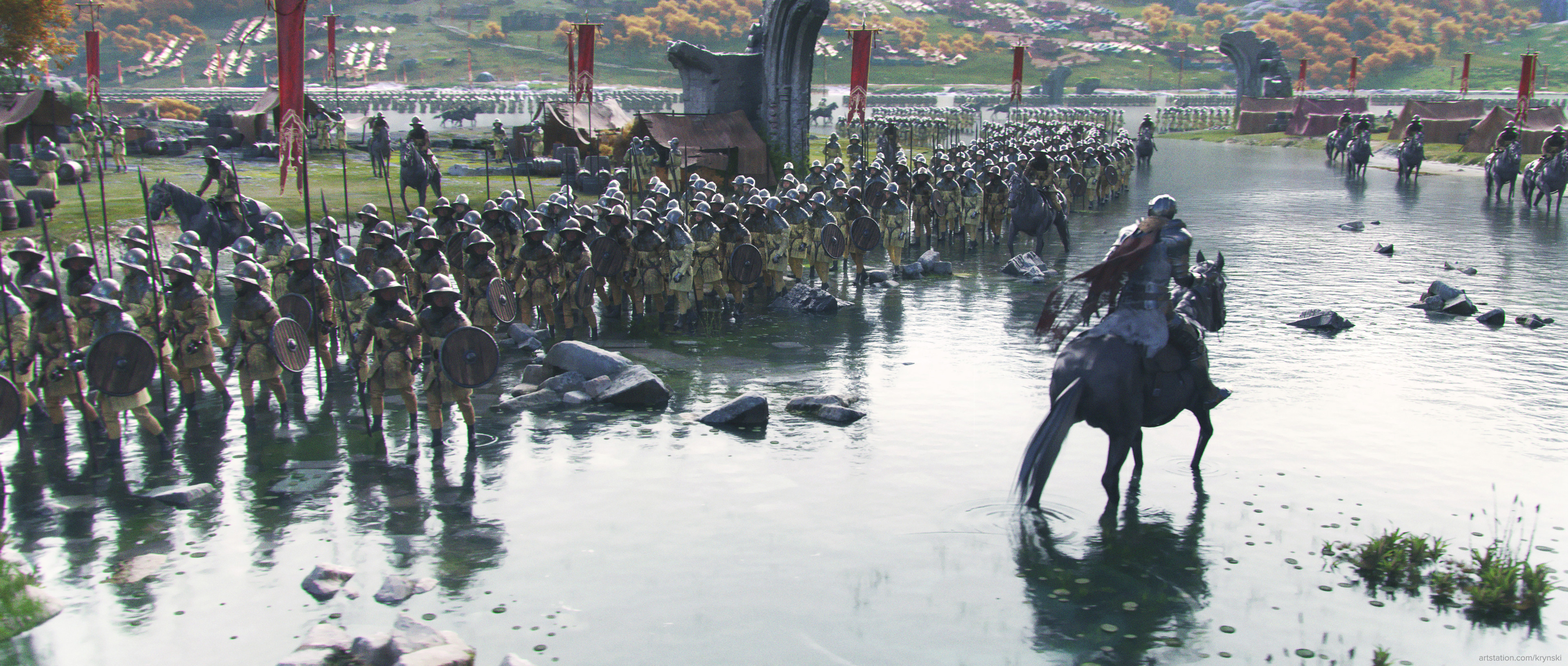The Storm of Blades
War is not a nice lady, you know? She is a shambling, sickness-stricken whore that will either kill you or leave you a drained husk of sullen flesh and poisoned mind.
The following is an excerpt from "On the Nature of History" by Senior Archivar Gaian Maorani
"In this chapter, I want to discuss a particular application of history, mostly its use as a tool to shape the perception of certain events. To do this, I will use the example of the oh-so-famous Storm of Blades."
"A rather irritant name, I have to admit. Born from the romantic visions of poets, people usually not associated with a comprehensive understanding of the science of history. You may already see just why this conflict is the perfect example for my case. Following this, I will present the two versions of the story available to us."
Duel of the Fates
"Most people view this conflict, which in actuality should be called the "Eskani Invasion of Vardania", as some sort of climactic duel between the forces of civilisation and chaos. Its presentation is more akin to a play, with set roles for heroes and villains, dramatic turns, and all manner of heroic and tragic sacrifice. The Eskani predictably take on the role of the villain. Ruled by Gimilkar the Berserker, a true monster of a man that eats at least five men by breakfast and rapes ten women before supper, they storm the continent intent on wiping out the light of Vardanian civilisation. The Berserker crushes the armies of Emperor Valerian IX. and his daughter Empress Aelia II., both of whom heroically sacrifice themselves to halt the deluge before striking deep into the heart of the continent. His armies are only slowed down because they are too occupied with slaughtering every man, woman and child they can find. By 3131 DA, he stands poised to attack the metropolis Tarquinnia itself. But just as Gimilkar is about to launch the assault, he is struck dead by a heart attack. His army falls into chaos and is then broken by the final hero of the tale: Gordian VI. Artanus, who pushes the barbarians back north and saves the empire. Gordian's forces are far too meagre, the empire too exhausted, and he is forced to accept the division of the continent. It is a nice tale, for sure. And a great example of propaganda. Turning the Eskani into mindless monsters, a practice known as dehumanizing someone, allows for a simple black-and-white tale. It also serves to raise the stakes and makes people forget the inner workings of the empire in favour of a grand narrative about the possible end of all civilisation. And last but certainly not least, it serves as justification for the rise of the Artanid Dynasty. Who can deny the rule of a family that saved the world after all?"I have gained victory today; that much is true. But I've achieved so much more, Tiberius. Today, I have won the empire.
Battle for the Scraps
"Reality is often disappointing in comparison. Some facts are kept by official accounts. There was an invasion by the Eskani. And the few sources we have remaining do point to it as a dire threat. But it was not a civilisation-ending event. The war itself was not a duel of titans either. More of a fully armoured knight punching an octogenarian type of fight. Accounts of violence, many of which have been written over a century later, seem exaggerated as well. Much of northern Vardania had been depopulated during the Diarchy and many areas seem to have simply surrendered to the invaders. Valerian and his daughter are attested to, but not as rulers of the united Hegemony. He was one of several major warlords that had managed to establish themselves at the end of the Diarchic period. The others, including the later emperor Gordian, were eager to see a rival eliminated at no cost to themselves and only lifted a finger once the Eskani reached their domains. Who really led them, and by extension if Gimilkar is purely fictional or not, is unclear. But we know that they died in around 3131 DA, sparing the Heartlands from a major invasion in the process. The Battle of the Tevia, which saw Gordian smash the invading army, seems to have been a major skirmish rather than an all-out battle. It did, however, give him the prestige boost necessary to claim the throne and fortify the position of his dynasty, a house that has ruled the Hegemony for 175 years by now. He certainly knew how to sell his success." Conclusion "The above example should illustrate one point quite clearly: history is not set in stone. It is malleable, can be modified and erased. How we see history always depends, in part at least, on the intentions of those sharing it with us. That does not mean that every piece of it should be ripped apart in a crazed search for accuracy, but rather that one should always have an open mind and keep the nature of history in mind."For how important it is, the period around the rise of the Artanids is terribly barren. A few dozen fragments in all of Vardania. What greater sign of decay can there be?
Included Conflicts
Conflict Type
War
Start Date
3127 DA
Ending Date
3137 DA
Conflict Result
End of the Diarchy. Beginning of the North-South Division of Vardania.
Location
By 3125 DA, the remnants of the Hegemony seem to have slowly stabilised again. Bit by bit, the smaller warlords ceased to be, either through sheer exhaustion of resources or because they were absorbed by a larger force, and power was now concentrated around five principal actors: Valerian Demetrias, Gordian Artanus, Aelia Valistra, Jordanus of Coisra and Theodosius Amares.
Each controlled sizeable forces and was able to establish their authority over multiple provinces. This deadlock was interrupted by the Eskani Invasion. With his rivals destroyed by the barbarians, Gordian was able to establish himself as emperor by 3131 DA.
The Berserker
Infamous for his invasion, Gimilkar is perhaps the best-known ruler of the Eskani. Problem is that his existence is not even certain. Contemporary Vardanian chronicles, insofar as they exist, don't mention him and Eskani sources from the period are hard to come by. However, even if proven to be a mere myth, there is no doubt that Gimilkar will endure, not on the pages of history books but in the minds of the people, a nightmare too powerful to ever remove.







Comments